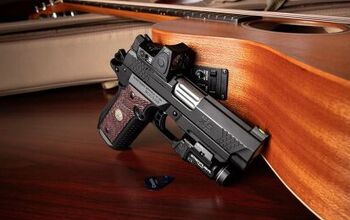Leupold Factory Tour 2023 – Part 2

Last week I was lucky enough to be invited out to Beaverton OR to take a tour of the Leupold factory with a number of other outdoor journalists. This is part two of the tour so if you have not read my previous article, I highly recommend starting here before reading this one.
Factory Tours @ TFB:
Leupold Factory Tour – Assembly
Once all of the components are complete, they head over to assembly, which is where they are, wait for it, assembled. Before we were allowed to walk into the assembly area, we were all required to apply some plastic tape to our feet to prevent the transmission of any dirt into the workspace. This was actually the funniest part of the tour as nobody could get this tape on their shoes in a graceful manner. But this is what is called a clean room.
Once a work order comes down from the planning department, the material handlers get the components ready for the assembly before parts actually go into the clean room. They are washed in their sonic cleaning station to make sure there’s absolutely no dust or debris on them before being assembled. While I kind of expected to see something like this at an optics manufacturer, it was still a very unique and interesting experience to be inside one of these rooms. Since scopes are basically intricate magnifiers, any kind of debris on the inside, will be very evident as soon as you look through them.
Once the parts make their way to the clean room, the material handler combines all the parts into the scope and stages them onto a cart. Those cards were then rolled over to the assembly line where they build the final product.
All of the scopes are assembled by hand with custom tools. We were lucky enough to go inside the radical assembly room where you could watch this one woman placing tritium dots on the reticle of one of their scopes. It was pretty incredible the amount of precision that this woman had in the whole time it was giving me anxiety just watching her put together these tiny tiny systems.
Leupold Factory Tour – Product Testing
Right next to the assembly room are some of the testing rooms where all of the scopes were put through various types of tests to make sure they met specifications. One of the most interesting ones was the dunk tank where all of the scopes are fully submerged into a water tank to check for any leaks.
We then walked past a few environmental chambers, where some scopes are tested down to -40° and up to 160°F to see how they handle those types of conditions. Well, not all scopes go through this process, this appears to be more of a way for them to test and refine their own products. Don’t think that every Leupold scope you buy has been frozen and then fried. This is more of a design test.
We then walked over to the “Punisher” recoil simulator. This is where all of the rifle scope designs must survive a ruthlessly abusive recoil test system. I believe we were told they have to withstand around 5000 impacts from a force similar to a .308 or greater.
After the optics have met all the testing and performance requirements, they then go to packaging where they are combined with foam, scope covers and everyone’s favorite instruction manual.
We then walked to an underground firing range where many of the optics are tested and some videos are filmed for their social media channels.
We then walked to the large warehouse across the street from the HQ where they store hundreds of products.
Our last stop on the tour was the customer service center. This team is responsible for answering 120,000+ calls and 50,000+ emails annually. They’re highly skilled at troubleshooting problems and can typically get customers back up and running without having to send products in for repair. Each and every one has extensive hunting or shooting experience, so when you’re talking to someone in Tech Services, you can rest assured that they know what they’re talking about.
Leupold Factory Tour – Conclusion
Overall, I found this tour to be very interesting in the fact that there are so many machines and people that are required to build optics. I was also very impressed with how clean the entire facility was. I don’t think I scuffed my feet across any dirt the entire time we were on the floors of even the CNC shop. I was also really impressed with the fact that whether you’re buying their cheapest scope or the most expensive scope, everything is made in-house by them in Oregon.
Stay tuned for the next article in this series where I head out of Beaverton and into the high deserts at the Leupold Optics Academy and do some long-range shooting.
We are committed to finding, researching, and recommending the best products. We earn commissions from purchases you make using the retail links in our product reviews. Learn more about how this works.

-Former Army Photographer / Videographer -Current Aviation Student -Future in debt due to Firearm collection
More by Patrik O































Comments
Join the conversation
So where are their lenses made?